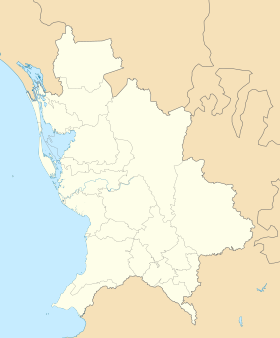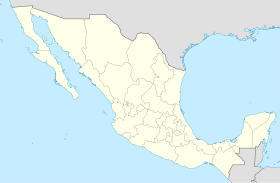Tepic,_Nayarit
Tepic (Spanish pronunciation: [teˈpik] ⓘ) is the capital and largest city of the western Mexican state of Nayarit, as well as the seat of the Tepic Municipality.
You can help expand this article with text translated from the corresponding article in Spanish. (June 2012) Click [show] for important translation instructions.
|
Located in the central part of the state, it stands at an altitude of 915 metres (3,002 ft) above sea level, on the banks of the Río Mololoa and the Río Tepic, approximately 225 kilometres (140 mi) north-west of Guadalajara, Jalisco. Nearby are the extinct Sangangüey volcano and its crater lake. Tepic is the primary urban center of this rich agricultural region; major crops include sugarcane, tobacco and citrus fruits.
The city was founded in 1531 as Villa del Espíritu Santo de la Mayor España.



